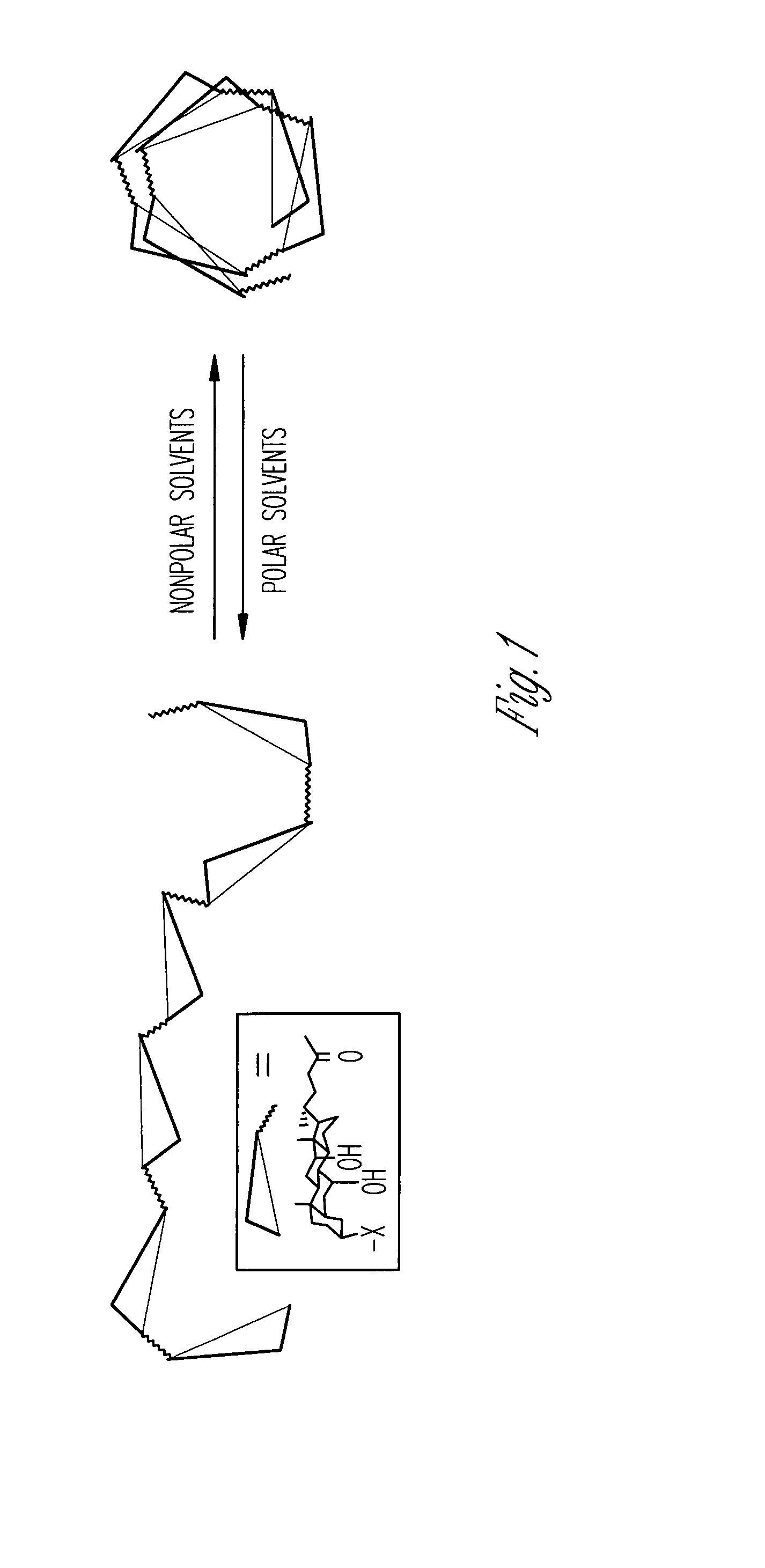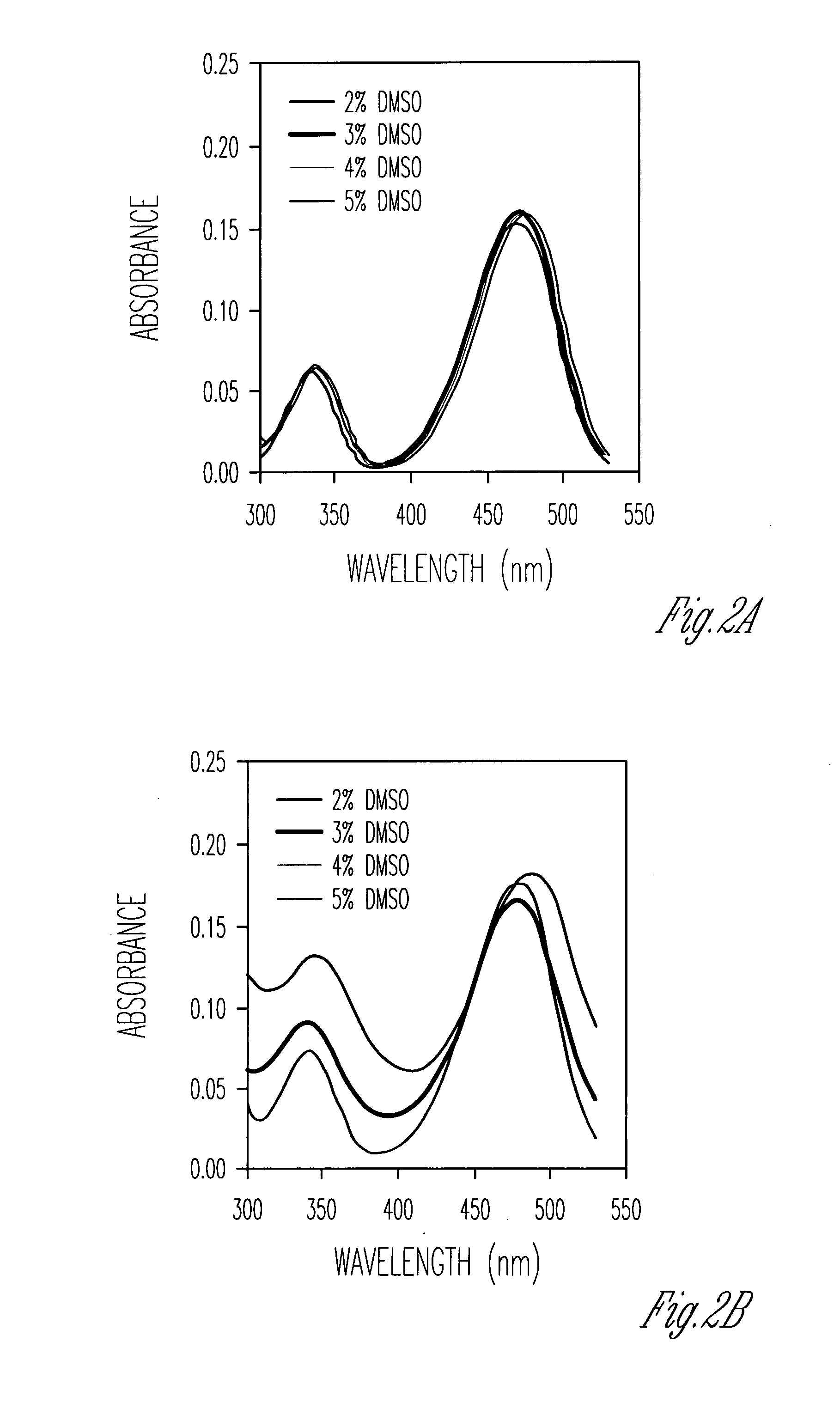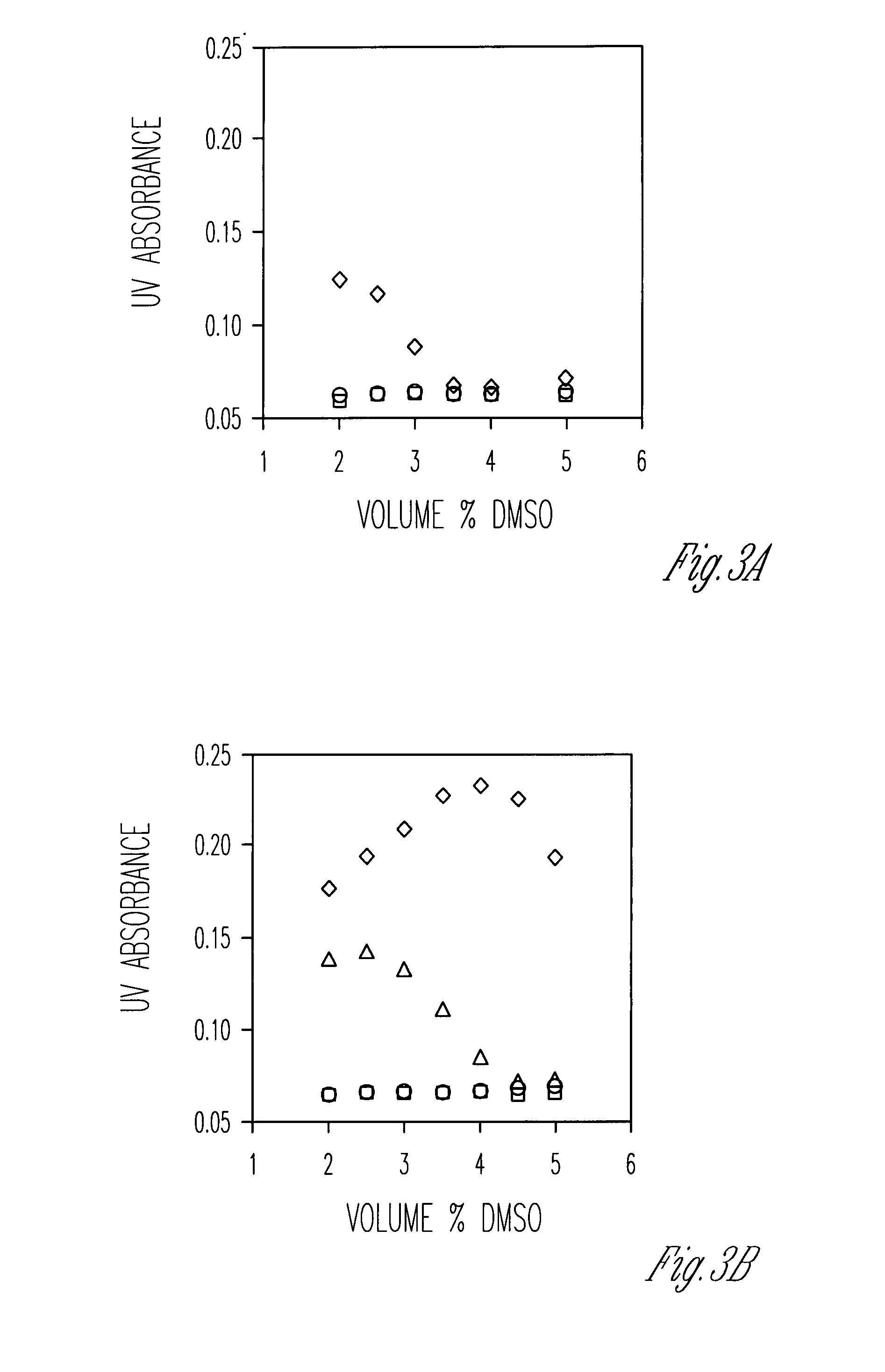Environmentally sensitive foldable oligomers
a foldable, environmental-friendly technology, applied in the direction of fluorescence/phosphorescence, instruments, nuclear magnetic resonance analysis, etc., can solve the problems of inability to predict the conformational changes of synthetic molecules, the inability to adopt predictable, and the inability to order conformations under defined conditions, so as to achieve high-controlled conformational changes and respond much faster
- Summary
- Abstract
- Description
- Claims
- Application Information
AI Technical Summary
Benefits of technology
Problems solved by technology
Method used
Image
Examples
example 1
Materials and Methods
[0199]This Example shows materials and methods for making oligomeric cholates. Briefly, the hydroxyl at the C-3 of cholic acid was converted to an amino group, and the resulting amino-functionalized cholic acid was used as a monomer to prepare amide-linked oligomeric cholates.
Materials
[0200]Anhydrous tetrahydrofuan (THF) and methylene chloride were dried by passage through a column of activated alumina under compressed nitrogen. Cholic acid was crystallized from 95% ethanol. Methyl sulfoxide (DMSO, spectrophotometric grade, 99.9%) was purchased from Acros. Methanol (HPLC grade) and hexanes (HPLC grade) were purchased from Fisher Scientific. Carbon tetrachloride (HPLC grade) was purchased from Aldrich. All other reagents and solvents were of A.C.S. certified grade or higher, and were used as received from commercial suppliers. All glassware and syringes were dried in an oven at least overnight prior to use. Routine 1H and 13C NMR spectra were recorded on a Varian...
example 2
Oligomeric Cholates
Amphiphilic Foldamers with Nanometer-Sized Hydrophilic Cavities
[0242]This Example shows that cholate oligomers fold into helical structures with nanometer-sized hydrophilic internal cavities in solvent mixtures consisting mostly of nonpolar solvents such as carbon tetrachloride or ethyl acetate / hexane and 2-5% of a polar solvent such as methanol or DMSO. The conformations of the foldamers were studied by UV, fluorescence, fluorescence quenching, and fluorescence resonance energy transfer. The nature of the polar / nonpolar solvents and their miscibility strongly influenced the folding reaction. Folding was cooperative, as evidenced by the sigmoidal curves in solvent denaturation experiments. The folded conformers became more stable with an increase in the chain length. The folding / unfolding equilibrium was highly sensitive toward the amount of polar solvent. One percent variation in the solvent composition could change the folding free energies by 0.5-1.4 kcal / mol.
R...
example 3
Mercury-Binding Foldamers
[0283]This Example describes foldamers that can bind metal ions such as mercury.
Materials and Methods
[0284]Anhydrous tetrahydrofuan (THF) and methylene chloride were dried by passage through a column of activated alumina under compressed nitrogen. Cholic acid was crystallized from 95% ethanol. Methyl sulfoxide (DMSO, spectrophotometric grade, 99.9%) was purchased from Acros. Methanol, hexanes, and ethyl acetate were of HPLC grade and were purchased from Fisher Scientific. All other reagents and solvents were of A.C.S. certified grade or higher, and were used as received from commercial suppliers. All glassware and syringes were dried in an oven at least overnight prior to use. Routine 1H and 13C NMR spectra were recorded on a Varian VXR-300 and VXR-400 spectrometer. MALDI-TOF mass was recorded on a Thermobioanalysis Dynamo mass spectrometer. ESI-MS mass was recorded on Shimadzu LCMS-2010 mass spectrometer. UV-visible spectra were recorded at ambient temperat...
PUM
| Property | Measurement | Unit |
|---|---|---|
| Time | aaaaa | aaaaa |
| Fraction | aaaaa | aaaaa |
| Fraction | aaaaa | aaaaa |
Abstract
Description
Claims
Application Information
 Login to View More
Login to View More - R&D
- Intellectual Property
- Life Sciences
- Materials
- Tech Scout
- Unparalleled Data Quality
- Higher Quality Content
- 60% Fewer Hallucinations
Browse by: Latest US Patents, China's latest patents, Technical Efficacy Thesaurus, Application Domain, Technology Topic, Popular Technical Reports.
© 2025 PatSnap. All rights reserved.Legal|Privacy policy|Modern Slavery Act Transparency Statement|Sitemap|About US| Contact US: help@patsnap.com



